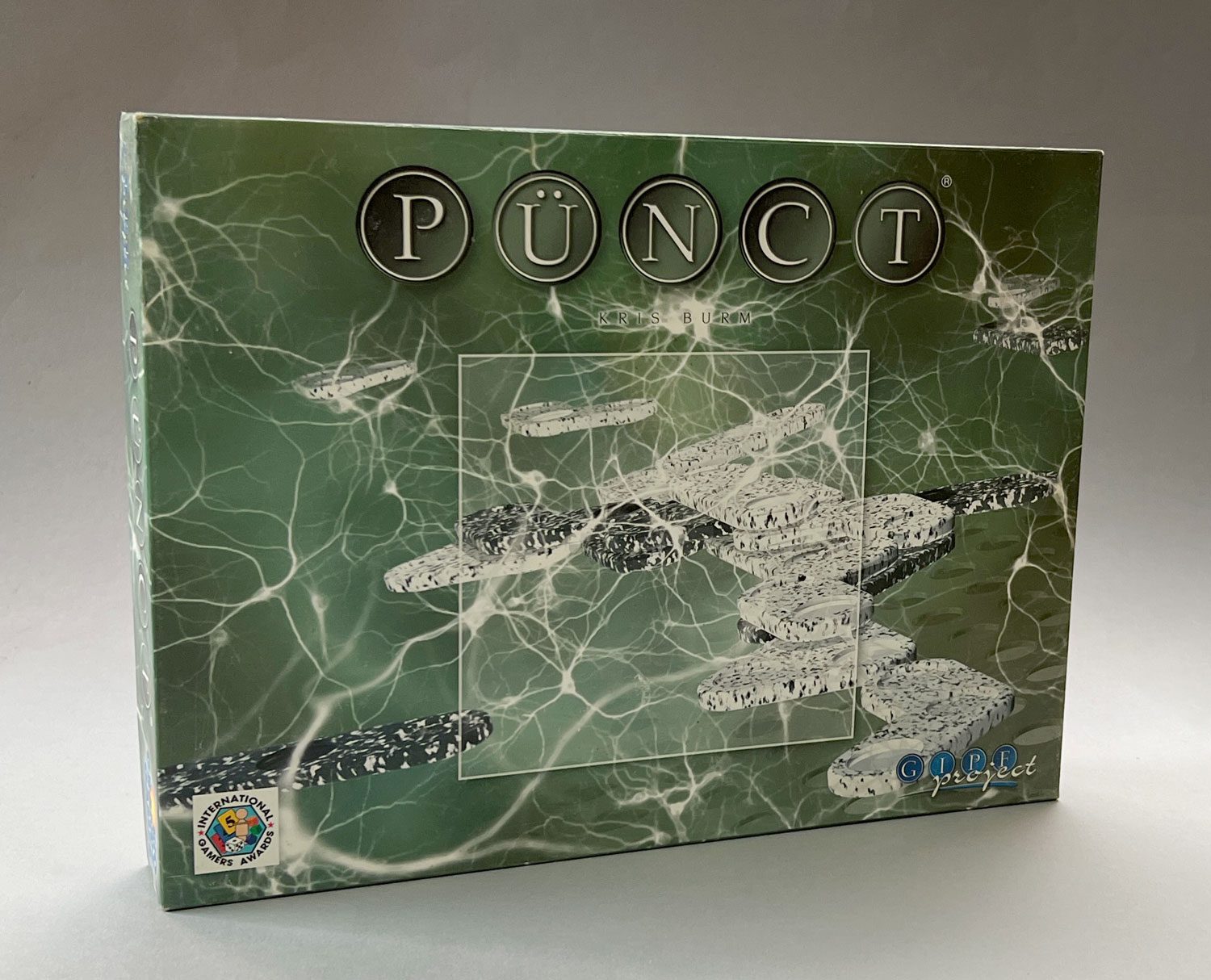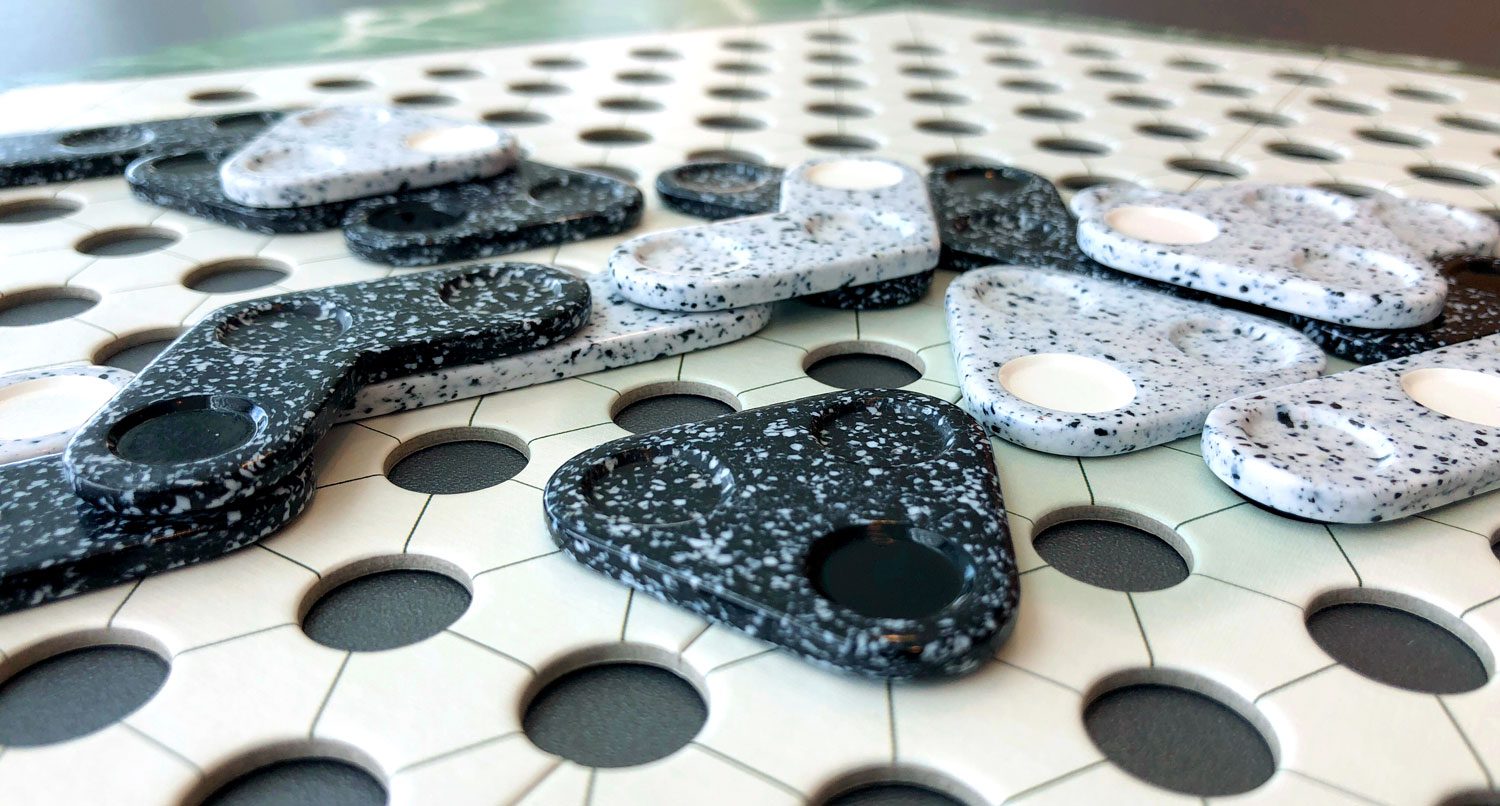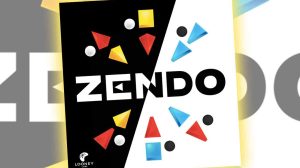Project GIPF is a series of eight abstract strategy games designed by Kris Burm. Each game features a hexagonal playing area and involves a dwindling of either pieces or playing area mechanic. The way they approach these elements is not only unique, but combines what I feel are the best qualities in most abstracts: simple rules that reveal complex game play.
If you’ve never heard the games within Project GIPF, GIPF, TAMSK, ZÈRTZ, DVONN, YINSH, PÜNCT, TZAAR, and LYNGK, I encourage you to seek them out, either in cardboard and bakelite or digitally online. They are well worth your time.
Today’s game: PÜNCT

PÜNCT is a connection game, one where you and your opponent are each trying to be the first to connect one side of a board to its opposite side. In most such games, this will mean stopping your opponent from doing the same thing. (Ta-Yü is a notable exception.) The boards for connection games come in a variety of shapes: square (Gonnect), vaguely square (Onyx), parallelogram (Hex), and even triangular (The Game of Y, where all three sides must be connected).
PÜNCT, like many of the GIPF Project games, uses a hexagon for its board shape. Each of the six sides is neutral, so either player can connect any two opposite sides to win the game. Unlike any other GIPF Project game, the spaces of the board are made of up holes, giving it something of an extreme Swiss Cheese appearance.
These holes are necessary to hold the game pieces in place and to show what moves are legal and which are not.
Playing the Game
Each player starts the game by choosing to play as either black with gray flecks or gray with black flecks and take the eighteen pieces in your color. Your pieces come in three shapes, with each piece covering three spots on the board: six of these are triangles, six are straight lines, six are bent at a 120º angle. Each piece has three dots on top, two are the color of the piece, while one is fully blackened. This blackened dot is the PÜNCT of the piece. The PÜNCT of pieces is evenly distributed with regard to its position on each type of piece. (Straight lines and angled pieces each have dots at the ends and the center.)

Players start by placing their pieces anywhere on the board they would like, except for the nineteen spaces that make up the hexagon at the center of the board. You can never place your pieces on the board in this area, they can only be moved there from elsewhere on the board.
To move a piece on your turn, you’ll use a single dot-sized PÜNCT reference piece that does not contribute to any end-game connections. When a player picks up the piece they intend to move, they place their singular PÜNCT piece on the spot on the board where the PÜNCT of the moving piece was. Pieces may move only along straight lines radiating from this PÜNCT piece. Once you have moved the piece, take the reference PÜNCT piece back to your collection of pieces.
Along with piece movement, what makes PÜNCT stand out amongst connection games is the ability to move pieces atop one another. To do so, you’ll follow the same piece movement rules as above, but then place your piece atop any other pieces. There are three limitations to this: your PÜNCT piece must always be atop a piece of your own color; triangles must have all three dots resting on other pieces; straight and angled pieces can have their middle dot over an empty space, thus creating a ‘bridge’.

You cannot move pieces that have other pieces on top of them. You can, however, continue to build up as many levels as pieces allow.
If both players have all their pieces on the board and neither player has connected two sides, the winner is the player who controls the majority of the nineteen spaces in the center hex of the board.
PÜNCT Thoughts
PÜNCT makes for a challenging game. Your initial placement of pieces must mix offense and defense, as well as flexibility of movement. It is this third element that gives PÜNCT its character. There is rarely a runaway winner in PÜNCT as your connection plans are clear on the board and can be defended against with a strategic movement or two. Often, by moving a piece atop your opponent’s pieces, you not only break their connection line but open new connection possibilities for yourself.

I respect PÜNCT, even if I don’t play it very often. To be honest, I am more likely to reach for one of the other games in the series to either play or teach to new players. That doesn’t mean PÜNCT doesn’t deserve your time and attention. As another simple concept game reimagined with layers of complexity, it’s a worthy addition to any abstract gamer’s collection.
Here's a list of all Project GIPF reviews.











Add Comment